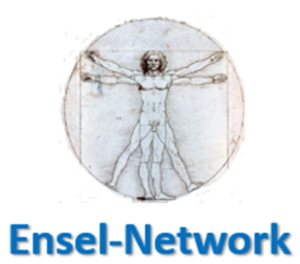ERASMUS+ DANCEFULNESS
The course is born from the need to find a learning model that develops a methodology that helps reduce the problems generated at the educational level in the last century and the current one. That allows us to generate a model that helps education provide a response to the high level of school failure, dropout, educational and social exclusion, unemployment rate, drug use, aggressiveness, gender inequality, and the situation of students with problems of mental health. All this leads us to propose a strategy that allows us to delve into each of the different problems in an innovative and inclusive way, which involves building tools, skills, competencies so that the participants, directly and indirectly, the families, society, and educational community, can reach higher levels of internal and external management.
The solution is developed by an educational team with extensive educational, professional and training experience in inclusion difficulties.
The idea of the course is to unroll and propose instruments to accompany the process of building space or classroom in which to build an "integral" person with the ability to evolve, adapt and develop in any area of their lives, generating an individual capable of influencing their different environments, giving rise to the "leader" of the future. Dance is a key tool.
Therefore, the need to continue
innovating and learning in the different scenarios that we find ourselves in throughout school, personal, work, and social life, has allowed the appearance
of the combination of mindfulness and dance, as a transforming axis of the
person and his environment.
The course sought the inclusion of students, of people with learning, personal or social difficulties and with a great risk of educational and social exclusion, and to include groups with mental, physical and sensory health disorders as a means to develop a change at the level of gender inequality.
The justification of Dancefulness is based on the success that certain works have shown and the experiences contributed by the teachers of this course, which aims to create a program of change in the vision of the teacher, the center, and the students and organizations that work together. directly or indirectly with people with a high risk of exclusion.
The methodology that will be used in Dancefulness is based on a combination of previously demonstrated successful methods, it is defined through two axes: the first will be dance as a means of acting and reducing the different difficulties and the second will be mindfulness as elements of change in the self-knowledge, learning and overcoming problems individually and collectively. Both parties need each other to reach a common point, such as learning to understand our body and our mind, achieving a beautiful dance composition. Building values and skills that act directly on school performance or change the direction of our lives.
We must learn to understand that education should not be a simple process of transmitting concepts, but that learning is a process of being in tune with our minds, hearts, and minds.
<<The educational institution as it is built does not deal with more than insignificant things, they do not teach people to be good people to achieve a better world, a brief contact with the school is enough for young people to know that they are not interested.>> (Claudio Naranjo, 2004)
The educational system where we usually develop our teaching functions is characterized by showing an education focused on goals and not on processes, the final result being the most important thing, which is why it shows a methodology aimed at automation as opposed to professional and personal self-management. Therefore, a performance-oriented model is observed. Also, the value of the students is made from the pre-established criteria, generating a context that determines "WHAT IS GOOD AND WHAT IS BAD", being the value of each one depends on the reference group that we use to classify it. Finally, education is based on more intellectual development compared to soft skills as indicated (Ramos, Recondo and Enríquez, 2012).
Education must seek that students can enhance curiosity as a means of generating students with a capacity to enhance entrepreneurship. As a means of creating future professionals who respond to the new challenges that arise in the EU.
The foregoing generates classrooms with a high demotivation and dropout rate, worse classroom climates, greater frustration at the student level, as well as teachers who are more disconnected from the teaching process, where functions have increased at the administrative level and as mere exhibitors of knowledge in an environment that seeks the ability to adapt or respond to major technological and social changes. For this reason, a learning model begins to emerge where the classroom has a sense of accompaniment in the development and characteristics of each subject, therefore, the learning development spaces must turn towards a sense of full self-knowledge, to enhance comprehensive development. of student.
In the new paradigm of education, strategies or learning models are proposed where the change of the world is proposed from our own model. For this reason, it is important to create a mechanism that enhances respect for the person and with it, love for the person as a means of increasing the acceptance of the person and of others. Being able as teachers to create a classroom that builds the acceptance of each person in each and every one of the elements that constitute as a means of learning what we need to advance.
It is important that we can take a
moment before starting the course to be aware of how we are, for this, we will
carry out an activity called SWOT.
